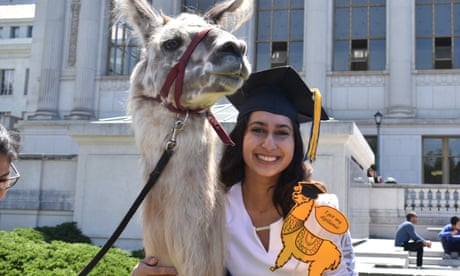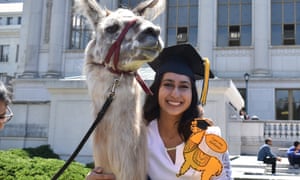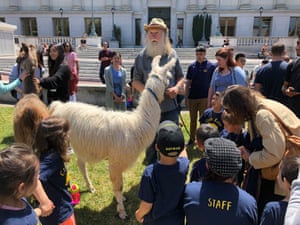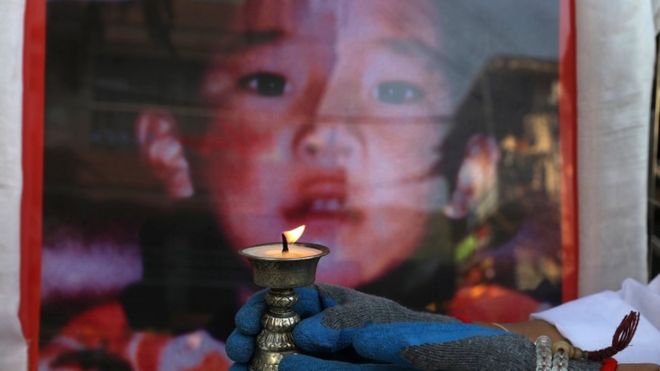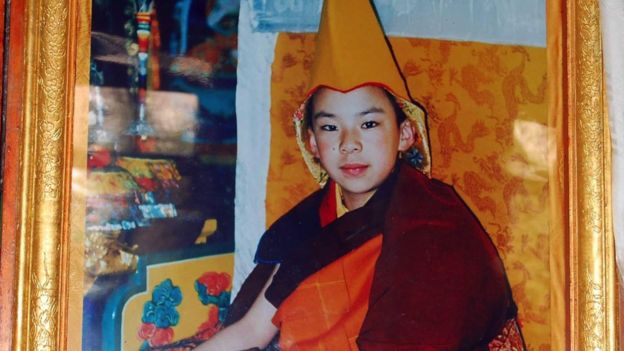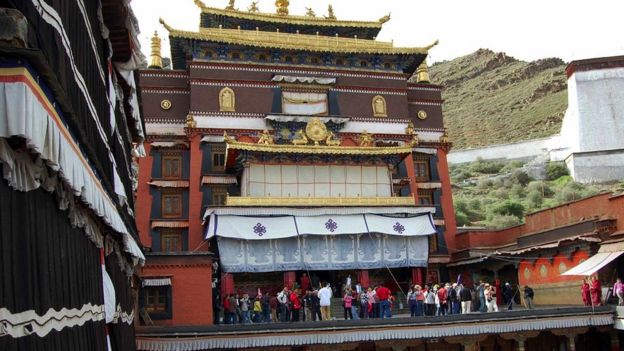By Allen Cone
 Photo by Joedson Alves/EPA-EFE
Photo by Joedson Alves/EPA-EFE
Federal public officials protest against the president of Brazil,
In all, 312,902 people have died from the disease globally and the cases have passed 4.7 million.
Around the world, while nations' leaders had attempted to curb the spread of the disease, including lockdowns, Brazilian President Jair Bolsonaro has played down the situation, telling people to work and encouraged people to go into public gatherings.
Bolsonaro issued an executive order last week classifying gyms and beauty salons as essential businesses. He wants them open, saying "health is life."
"Brazil's could have been one of the best responses to this pandemic," Marcia Castro, a professor at Harvard University who is from Brazil and specializes in global health, told The New York Times. "But right now everything is completely disorganized and no one is working toward joint solutions. This has a cost, and the cost is human lives."
Brazil handled HIV infections in the 1990s and the Zika outbreak in 2014 prior to Bolsonaro becoming president in January 2019.
"Now there's been a rupture in the nation with its scientific community," Tania Lago, a professor of medicine at Santa Casa University in Sao Paulo, who worked in the ministry of health in the 1990s, told The New York Times. "What saddens me is that we are and will continue to lose lives that could be saved."
Jair Bolsonaro, in front of the Palacio Planalto headquarters,
in Brasilia, Brazil, on Friday.
The sign reads "Go Bolsonaro! Stay civil service!."
May 17 (UPI) -- Deaths and cases in Brazil are skyrocketing as other nations, including epicenters at one time, have stabilized.
The death toll has ballooned in the South American nation to 15,662 to rise to sixth place in the world, according to worldometers.info tracking. Two weeks ago the death count was 7,025 and one week later it had exploded to 11,123. Cases stand at 127,837, second in the world, compared with 51,131 two weeks ago.
On Saturday, Brazil reported 816 more deaths -- second only to the United States with 1,218. And cases have been climbing exponentially, including 14,919 Saturday and a record 15,3053 on Friday. The total number of cases are 233,511 -- fifth in the world.
Brazil's Federal Council of Nursing said at least 116 nurses and medical technicians have died from confirmed or suspected coronavirus cases in recent weeks. Ventilators and intensive care units are in short supply.
The death toll has ballooned in the South American nation to 15,662 to rise to sixth place in the world, according to worldometers.info tracking. Two weeks ago the death count was 7,025 and one week later it had exploded to 11,123. Cases stand at 127,837, second in the world, compared with 51,131 two weeks ago.
On Saturday, Brazil reported 816 more deaths -- second only to the United States with 1,218. And cases have been climbing exponentially, including 14,919 Saturday and a record 15,3053 on Friday. The total number of cases are 233,511 -- fifth in the world.
Brazil's Federal Council of Nursing said at least 116 nurses and medical technicians have died from confirmed or suspected coronavirus cases in recent weeks. Ventilators and intensive care units are in short supply.
In all, 312,902 people have died from the disease globally and the cases have passed 4.7 million.
Around the world, while nations' leaders had attempted to curb the spread of the disease, including lockdowns, Brazilian President Jair Bolsonaro has played down the situation, telling people to work and encouraged people to go into public gatherings.
Bolsonaro issued an executive order last week classifying gyms and beauty salons as essential businesses. He wants them open, saying "health is life."
"Brazil's could have been one of the best responses to this pandemic," Marcia Castro, a professor at Harvard University who is from Brazil and specializes in global health, told The New York Times. "But right now everything is completely disorganized and no one is working toward joint solutions. This has a cost, and the cost is human lives."
Brazil handled HIV infections in the 1990s and the Zika outbreak in 2014 prior to Bolsonaro becoming president in January 2019.
"Now there's been a rupture in the nation with its scientific community," Tania Lago, a professor of medicine at Santa Casa University in Sao Paulo, who worked in the ministry of health in the 1990s, told The New York Times. "What saddens me is that we are and will continue to lose lives that could be saved."
Although deaths and cases have been spiking in Brazil with 209.5 million people, the nation's deaths per million are 74, lower than the 272 in the United States. The world total is 40.3 per million.
As the pandemic has spiraled out of control in Brazil, European nations have been controlling the pandemic.
Sandwiched between the United States and Brazil with the most deaths are four European nations.
Yet their combined deaths totals 821 after only five more than Brazil's Saturday count: Britain with 468, Italy with 153, France with 96 and Spain with 104. And the numbers were even less on Sunday for nation's reporting: Britain with 170, Italy with 145 and Spain with 87.
Spain's figure is the lowest figure since March 16 after a high of 961 on April 2.
The total number of deaths in Spain now stands at 27,650.
Despite the low number, Prime Minister Pedro Sanchez said Saturday he will seek to extend its coronavirus state of emergency for the last time until late June.
As the pandemic has spiraled out of control in Brazil, European nations have been controlling the pandemic.
Sandwiched between the United States and Brazil with the most deaths are four European nations.
Yet their combined deaths totals 821 after only five more than Brazil's Saturday count: Britain with 468, Italy with 153, France with 96 and Spain with 104. And the numbers were even less on Sunday for nation's reporting: Britain with 170, Italy with 145 and Spain with 87.
Spain's figure is the lowest figure since March 16 after a high of 961 on April 2.
The total number of deaths in Spain now stands at 27,650.
Despite the low number, Prime Minister Pedro Sanchez said Saturday he will seek to extend its coronavirus state of emergency for the last time until late June.
In the past week, France has posted two days of double-digit increases, down significantly from the high of 14,38 on April 15.
Health officials in the nation have uncovered evidence the virus had hit before the first cases were declared on Jan. 24.
Researchers in northeastern France announced in a release last week that it had identified two X-rays, from Nov. 16 and Nov. 18, showing symptoms consistent with the novel coronavirus, NBC News reported. That's even before the disease was officially identified in China.
Italy at one time was the epicenter, moving to No. 1 in deaths, but now is third behind Britain -- at 31,908 -- from a high of 919 new deaths on March 27. Before Sunday, the previous low was 97 on March 9.
Factories in Maranello and Modena are no longer closed as Ferrari has resumed production of its cars.
And Britain's daily death count has had ups on downs. Sunday's new deaths were about half as many as the Saturday figure. On Friday, there were 384 compared with 210 on Monday. The high was 1,172 on April 21.
Prime Minister Boris Johnson said Britain may not be free of the coronavirus "for some time to come."
Two other European nations are in the top 10. On Sunday, No. 7 Belgium reported 47 more deaths and Germany initially one. Netherlands fell out of the top 10, dropping behind Canada, and added only 10 more deaths Sunday.
Sweden, which has been attempting "herd immunity," reported 5 more deaths Sunday after 28 more deaths Saturday for 3,679 in 15th place as well as 466 cases. Neighboring Norway reported zero deaths at 232 and 7 cases.
Cases, however, been climbing in Russia. The nation reported 9,709 new cases for a total of 281,752 on Sunday, second in the world behind the United States. However, Russia is only at 2,631 deaths, including 94 more Sunday, for 18th.
In Europe, 162,332 have died from the virus so far Sunday.
In Asia, just 245 deaths were reported Sunday for a total of 24,547. That includes 4,633 in China where an additional death hasn't been reported since April 27. The handful of cases over the past few weeks include six reported Sunday. China has continually dropped in the world in total, now in 13th places.
Wuhan's hospitals finally returned to normal over the weekend after the last patients in the city were discharged. However, the city plans to test all 14 million residents after confirming its first cluster last week since the end of the lockdown on April 8.
Korea also didn't report a death Sunday to stand at 262 with 13 more cases for a total of 11,050.
A patient infected with the virus visited multiple clubs in Itaewon earlier this month. The nation instituted extensive quarantines of more than 1,000 who attended the clubs. The number of cases linked to the clubs was 162.
High school seniors will return to classrooms starting Wednesday, a week later than earlier scheduled, and other students will go back to school by June 8.
India, which surpassed China's cases on Friday, reported a record 4,864 ones Saturday and then 1,591 on Sunday to stand 92,329. Its death count is 4,633 with an additional 40.
India's lockdown will continue until at least May 31, the Ministry of Home Affairs said Sunday.
Iran reported 1,806 cases but only 51 deaths Sunday for ninth place in deaths with 6,988.
In North America, all but of around 11,000 deaths are linked to the United States. But cases and deaths have been spiking in its border nations.
Canada has risen to 10th place and Mexico is in 12th place.
On Saturday, Canada reported 117 more deaths for 5,679. Mexico gained 290 deaths, the fourth-most in the world, for a total of 4,767.
In Mexico, testing is not a priority, conducting only 89 tests per 100,000 people, according to health ministry data.
"I don't think testing is a must," Dr. Hugo Lopez-Gatell, Mexico's top epidemiologist, told CNN when asked if the country could re-open safely without more tests. "This doesn't mean we're resistant to testing, we will use testing but in a carefully planned manner."
British Columbia has among the lowest death rates in North America -- 3 per 100,000 people -- as the province became one of the first in the world to develop a test.
Two other continent have reported relatively fewer deaths.
In Oceania, 199 fatalities have been reported -- 98 in Australia and 21 in New Zealand. One death was last reported in Australia on May 13. In New Zealand, it was one on May 6.
Victoria plans to reopen restaurants and pubs beginning June 1 but patrons will need to provide some brief personal details to enter venues for tracing purposes.
In Africa, there have been 2,726 deaths, including 612 in Egypt and 542 in Algeria.
Health officials in the nation have uncovered evidence the virus had hit before the first cases were declared on Jan. 24.
Researchers in northeastern France announced in a release last week that it had identified two X-rays, from Nov. 16 and Nov. 18, showing symptoms consistent with the novel coronavirus, NBC News reported. That's even before the disease was officially identified in China.
Italy at one time was the epicenter, moving to No. 1 in deaths, but now is third behind Britain -- at 31,908 -- from a high of 919 new deaths on March 27. Before Sunday, the previous low was 97 on March 9.
Factories in Maranello and Modena are no longer closed as Ferrari has resumed production of its cars.
And Britain's daily death count has had ups on downs. Sunday's new deaths were about half as many as the Saturday figure. On Friday, there were 384 compared with 210 on Monday. The high was 1,172 on April 21.
Prime Minister Boris Johnson said Britain may not be free of the coronavirus "for some time to come."
Two other European nations are in the top 10. On Sunday, No. 7 Belgium reported 47 more deaths and Germany initially one. Netherlands fell out of the top 10, dropping behind Canada, and added only 10 more deaths Sunday.
Sweden, which has been attempting "herd immunity," reported 5 more deaths Sunday after 28 more deaths Saturday for 3,679 in 15th place as well as 466 cases. Neighboring Norway reported zero deaths at 232 and 7 cases.
Cases, however, been climbing in Russia. The nation reported 9,709 new cases for a total of 281,752 on Sunday, second in the world behind the United States. However, Russia is only at 2,631 deaths, including 94 more Sunday, for 18th.
In Europe, 162,332 have died from the virus so far Sunday.
In Asia, just 245 deaths were reported Sunday for a total of 24,547. That includes 4,633 in China where an additional death hasn't been reported since April 27. The handful of cases over the past few weeks include six reported Sunday. China has continually dropped in the world in total, now in 13th places.
Wuhan's hospitals finally returned to normal over the weekend after the last patients in the city were discharged. However, the city plans to test all 14 million residents after confirming its first cluster last week since the end of the lockdown on April 8.
Korea also didn't report a death Sunday to stand at 262 with 13 more cases for a total of 11,050.
A patient infected with the virus visited multiple clubs in Itaewon earlier this month. The nation instituted extensive quarantines of more than 1,000 who attended the clubs. The number of cases linked to the clubs was 162.
High school seniors will return to classrooms starting Wednesday, a week later than earlier scheduled, and other students will go back to school by June 8.
India, which surpassed China's cases on Friday, reported a record 4,864 ones Saturday and then 1,591 on Sunday to stand 92,329. Its death count is 4,633 with an additional 40.
India's lockdown will continue until at least May 31, the Ministry of Home Affairs said Sunday.
Iran reported 1,806 cases but only 51 deaths Sunday for ninth place in deaths with 6,988.
In North America, all but of around 11,000 deaths are linked to the United States. But cases and deaths have been spiking in its border nations.
Canada has risen to 10th place and Mexico is in 12th place.
On Saturday, Canada reported 117 more deaths for 5,679. Mexico gained 290 deaths, the fourth-most in the world, for a total of 4,767.
In Mexico, testing is not a priority, conducting only 89 tests per 100,000 people, according to health ministry data.
"I don't think testing is a must," Dr. Hugo Lopez-Gatell, Mexico's top epidemiologist, told CNN when asked if the country could re-open safely without more tests. "This doesn't mean we're resistant to testing, we will use testing but in a carefully planned manner."
British Columbia has among the lowest death rates in North America -- 3 per 100,000 people -- as the province became one of the first in the world to develop a test.
Two other continent have reported relatively fewer deaths.
In Oceania, 199 fatalities have been reported -- 98 in Australia and 21 in New Zealand. One death was last reported in Australia on May 13. In New Zealand, it was one on May 6.
Victoria plans to reopen restaurants and pubs beginning June 1 but patrons will need to provide some brief personal details to enter venues for tracing purposes.
In Africa, there have been 2,726 deaths, including 612 in Egypt and 542 in Algeria.
















